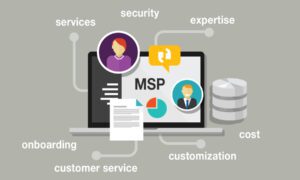Efficient immigration and customs processes are becoming increasingly important in today’s interconnected world. With rising global travel and trade, governments need smarter systems to manage the movement of people and goods. Delays and security threats at borders can disrupt operations and affect national security.
Technology plays a significant role in improving the efficiency and security of immigration systems. From automated gates to biometric verification tools, these innovations streamline procedures, minimize errors, and enhance safety. In this article, we explore how technology supports smarter immigration and customs operations, making it easier for authorities to regulate borders effectively.
The Role of Technology in Border Management
Managing large numbers of travelers and shipments can overwhelm immigration and customs systems. To address this, many countries have adopted digital solutions that automate processes and reduce waiting times. E-passports, for instance, contain embedded chips with personal data, allowing travelers to pass through automated gates quickly. Facial recognition systems further speed up identification, as they verify travelers without requiring manual checks.
These advancements help detect risks more effectively. Automated systems can flag individuals or cargo for additional inspection based on pre-screening data, making sure that authorities can focus on higher-risk cases. Beyond physical tools, modern border management involves skilled professionals who oversee the integration and operation of these systems.
Many of these experts pursue security studies degrees to develop the knowledge needed to manage security technologies and border operations. With training in areas such as risk management, policy implementation, and advanced security protocols, these professionals are equipped to handle the complexities of modern immigration systems. They play a vital role in keeping borders both efficient and secure.
Biometric Technology for Identification and Verification
Biometric technology is one of the most effective tools in modern immigration. Facial recognition, fingerprint scanning, and iris recognition systems are now widely used at airports and border checkpoints. These technologies improve accuracy by confirming identities with minimal human involvement. Travelers pass through checkpoints more quickly, and the chances of identity fraud are reduced.
Biometric systems also streamline immigration processes by linking traveler data with government databases. When someone enters a country, their biometric data can be instantly matched with existing records, speeding up immigration checks. This technology helps prevent the entry of individuals with false documents or those flagged for security concerns.
Real-world examples highlight the success of biometric technology. Many major airports now use facial recognition gates that allow passengers to board flights without showing passports. These systems offer both convenience and security, as they reduce waiting times while minimizing risks associated with manual verification. Biometric data also supports law enforcement efforts by tracking individuals across borders, helping prevent illegal activities.
AI and Data Analytics in Immigration Systems
Artificial intelligence (AI) plays an increasingly important role in modernizing immigration and customs operations. AI tools analyze large amounts of traveler data in real time, helping authorities identify potential risks quickly. These systems can flag unusual travel patterns or inconsistencies in visa applications, allowing immigration officials to act before security issues arise. Predictive analytics, powered by AI, also help agencies detect trends related to illegal activities, such as visa fraud or human trafficking.
Machine learning algorithms are being used to improve decision-making processes. These algorithms adapt over time, making the system more efficient in approving visa applications, processing asylum cases, and managing border crossings. AI systems learn from past decisions, identifying patterns that help predict future risks more accurately. This makes the overall immigration process smoother while reducing human errors.
AI-powered chatbots are another valuable tool for immigration agencies. These chatbots provide quick answers to frequently asked questions, assist travelers with paperwork, and help schedule appointments. By automating these tasks, chatbots reduce the burden on immigration staff, allowing them to focus on more complex cases. This use of AI improves both efficiency and customer satisfaction, as travelers receive faster assistance.
Cybersecurity and Protecting Sensitive Data
Immigration and customs operations depend on vast amounts of sensitive data, including personal identification and travel histories. Protecting this data from cyberattacks is a top priority for governments, as breaches could compromise national security and disrupt border operations. Agencies use encryption, firewalls, and intrusion detection systems to keep data safe from unauthorized access.
Cybersecurity is not just about technology—it also involves training staff to identify and respond to potential threats. Many cyberattacks target employees through phishing emails or other social engineering tactics. Regular staff training helps employees stay alert to these risks, reducing the chances of a successful attack. Immigration agencies also conduct system audits to identify vulnerabilities and strengthen defenses against future threats.
Balancing data privacy with security is another challenge. Governments must protect traveler information while also using it effectively for security purposes. Clear policies and transparent communication with travelers help address privacy concerns. Travelers are more likely to cooperate when they understand how their data is being used and stored.
Governments also collaborate with private sector partners to maintain high cybersecurity standards. Many immigration systems rely on third-party software or cloud services, making it essential to work closely with these providers to keep systems secure. Regular updates and security patches are critical to addressing emerging threats and maintaining system integrity.
Technology continues to shape smarter immigration and customs operations, offering solutions that improve both efficiency and security. Tools such as AI, biometric systems, and automated gates streamline processes, making border management more responsive and effective. Cybersecurity measures protect sensitive data, making sure that immigration systems can function smoothly without compromising privacy.
As these technologies evolve, skilled professionals will be needed to manage and implement them. With the right expertise and tools, immigration and customs operations can adapt to future challenges, providing secure and efficient services in a rapidly changing world.



































